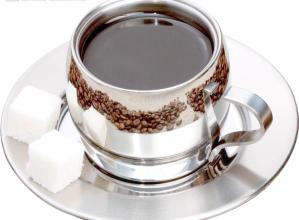Rich sour Bolivian fine coffee beans Manor flavor varieties Introduction
Bolivia is 1/3 of the Andean mountains, rugged terrain, mainly road transport, accounting for more than 85% of transportation. The main railway and road networks are concentrated in the west, and remote areas rely on air communication. But road coverage is the lowest in South America. And there is also the Ronggas Highway, the world's first insurance road known as the "road of death". There is no developed economy here, and it is one of the poorest countries in South America. However, with its beautiful lake scenery and unique scenery of the Andes, the Uyuni Salt Lake, known as the Mirror of the Sky, is a wonder of the world.
We know that Arabica coffee cannot be grown in cold places above 2000 meters above sea level. if the altitude is too high, coffee trees will frost because the temperature is too low. So Bolivian coffee is mainly grown in the Yungas region northeast of La Paz. It borders the Amazon basin and is about 1500-2500 meters above sea level with an average annual temperature of about 10-15 ℃. Therefore, it ensures the suitable temperature for the growth of coffee and protects the coffee plant from frost. In addition, the Bolivian coffee growing area has a distinct dry and wet season and fertile soil, which is a paradise for the development of boutique coffee. Bolivian coffee is usually picked by hand and is mostly processed by washing.
The early Bolivian coffee was of low quality and the market was very poor. Usually the picked coffee fruit is bumped all the way to the processing plant after a simple peeling treatment. Due to the imperfect infrastructure, the traffic is underdeveloped. Coffee farmers have to overcome the rugged mountain road and transport the beans to the higher altitude area of La Paz for washing. If the coffee fruit is not delivered to the processing plant in time, it is easy to ferment and rot on the wet mountain road. As a result, the coffee of good quality has been destroyed.
Bolivia has made a lot of efforts to improve the quality of coffee, stimulate the enthusiasm of coffee farmers and make coffee farmers have a deeper understanding of fine coffee. After the introduction of the COE competition, in the first COE competition held in 2004, there were 13 boutique bean cups with a total score of more than 84 points, and the champion bean score was as high as 90.44 points. In addition, in order to solve the problem of untimely post-processing, a washing treatment plant has also been built in Yanggas area. Let the freshly picked coffee be post-processed as soon as possible to prevent the decline in quality caused by transportation. Coffee farmers are also constantly refining their planting techniques. In short, Bolivia has finally completed a magnificent turn in quality through its own efforts in all aspects.
Bolivia not only has a unique growing environment, but also has an excellent variety of coffee-Typica. In the past two hundred years, the main variety of coffee in Yanggas area is the ancient Tibica. Tibica coffee has a balanced and soft flavor, with lively aroma and rich sour taste. Unfortunately, the low production of Tibika and poor disease resistance have led to low coffee production in Bolivia. There are even fewer opportunities to taste Bolivian coffee. So in order to increase coffee production, Bolivia, like other Central American countries, began to experiment with growing Kaddura and Catuai. Kaddura variety has high yield, high quality, rich sour taste and resistance to leaf rust. Kaduai variety has high yield, strong environmental adaptability and tolerance to diseases and insect pests. Planting these two varieties is expected to increase the yield as much as possible while ensuring the flavor quality.

Important Notice :
前街咖啡 FrontStreet Coffee has moved to new addredd:
FrontStreet Coffee Address: 315,Donghua East Road,GuangZhou
Tel:020 38364473
- Prev

Introduction of Guatemalan coffee Mayan coffee culture-Guatemalan coffee flavor describes the characteristics of the producing area
Antigua is the oldest and most beautiful city in America. As early as 1543, Antigua was the capital of all colonial times in Central America, and the Government House of Spain was also set up here. The whole city of Antigua was destroyed after the great earthquake of 1773, so the capital was moved to Guatemala City. Antigua is about 40 kilometers west of Guatemala City, where colonial buildings are located.
- Next

There are several flavors of Panamanian Coffee-introduction of Grinding degree of varieties in Manor producing area
Panamanian coffee is famous for the rosy summer of the Emerald Manor, which is also famous in the Boquete region of its Chiriqui province. Poquet Boquete is a town of Chiriqui in the province of Riki. It is located near the border between Panama and Costa Rica, near the famous Baru Baru volcano.
Related
- Detailed explanation of Jadeite planting Land in Panamanian Jadeite Manor introduction to the grading system of Jadeite competitive bidding, Red bid, Green bid and Rose Summer
- Story of Coffee planting in Brenka region of Costa Rica Stonehenge Manor anaerobic heavy honey treatment of flavor mouth
- What's on the barrel of Blue Mountain Coffee beans?
- Can American coffee also pull flowers? How to use hot American style to pull out a good-looking pattern?
- Can you make a cold extract with coffee beans? What is the right proportion for cold-extracted coffee formula?
- Indonesian PWN Gold Mandrine Coffee Origin Features Flavor How to Chong? Mandolin coffee is American.
- A brief introduction to the flavor characteristics of Brazilian yellow bourbon coffee beans
- What is the effect of different water quality on the flavor of cold-extracted coffee? What kind of water is best for brewing coffee?
- Why do you think of Rose Summer whenever you mention Panamanian coffee?
- Introduction to the characteristics of authentic blue mountain coffee bean producing areas? What is the CIB Coffee Authority in Jamaica?

